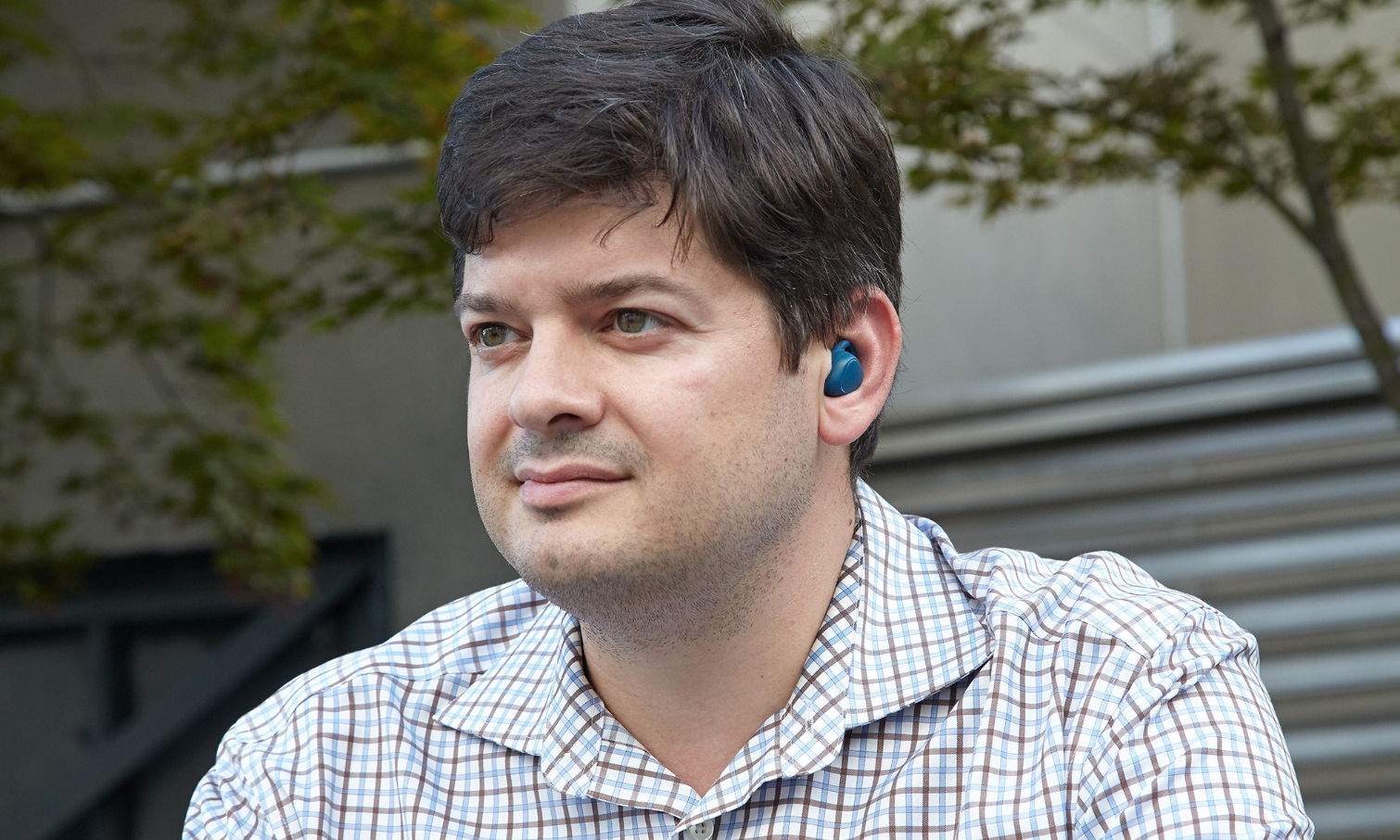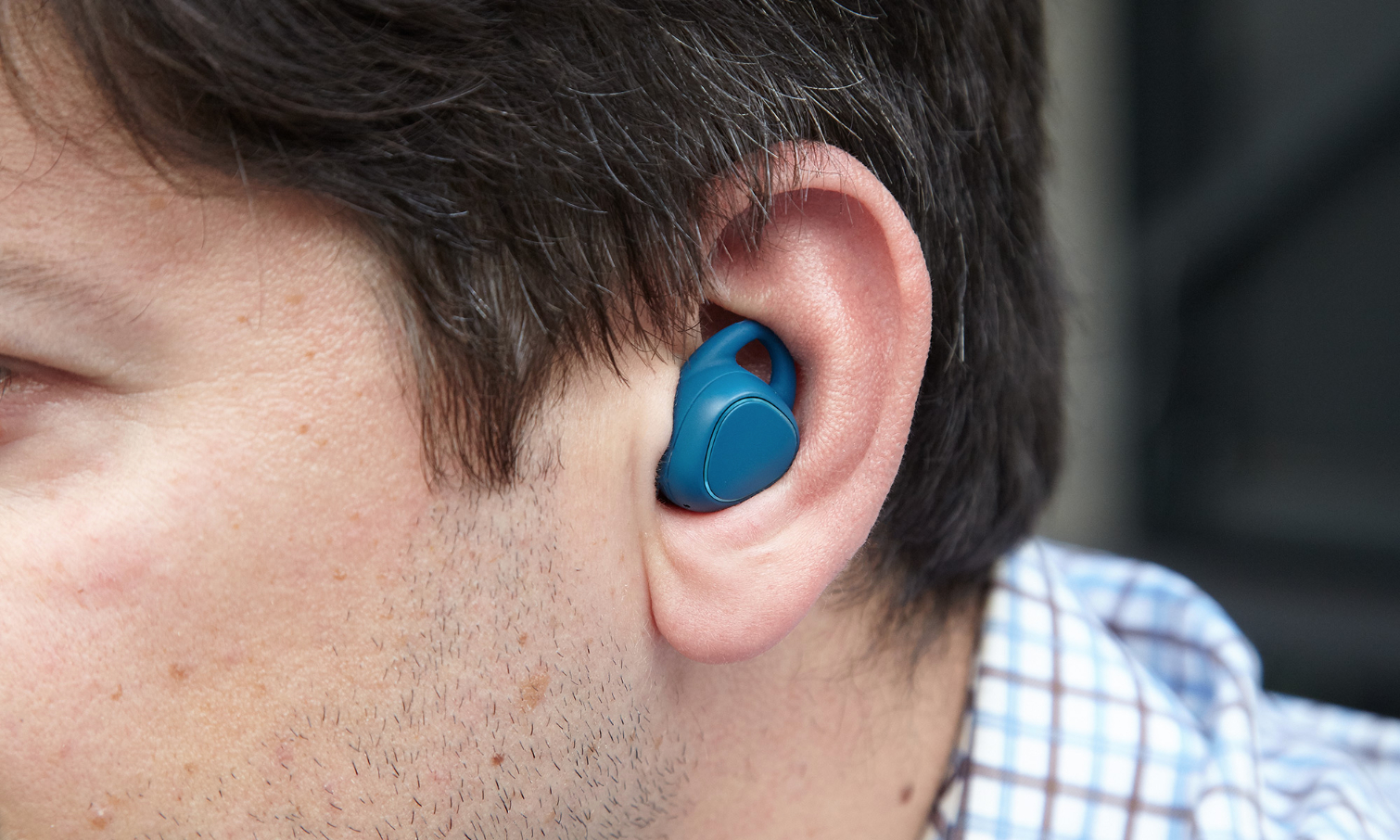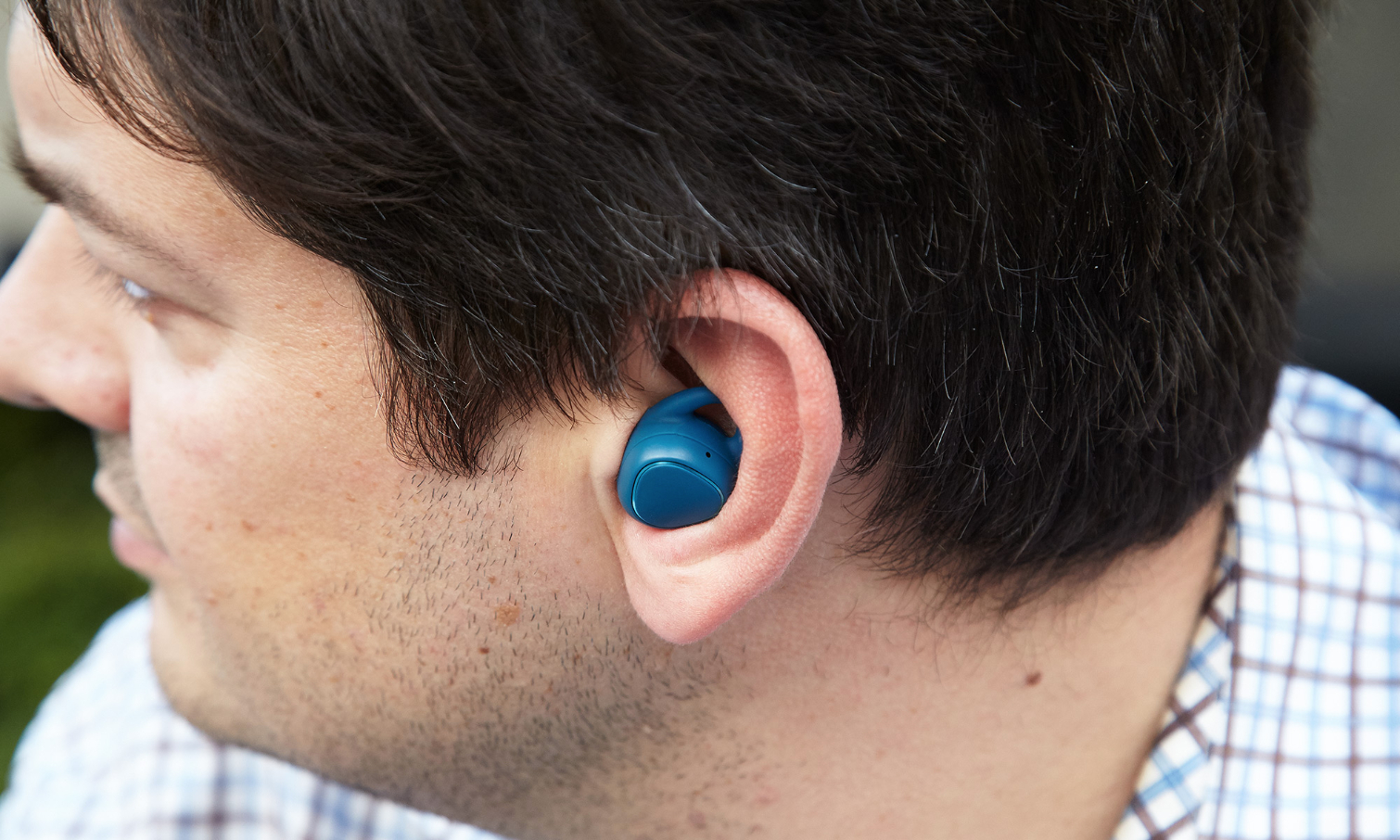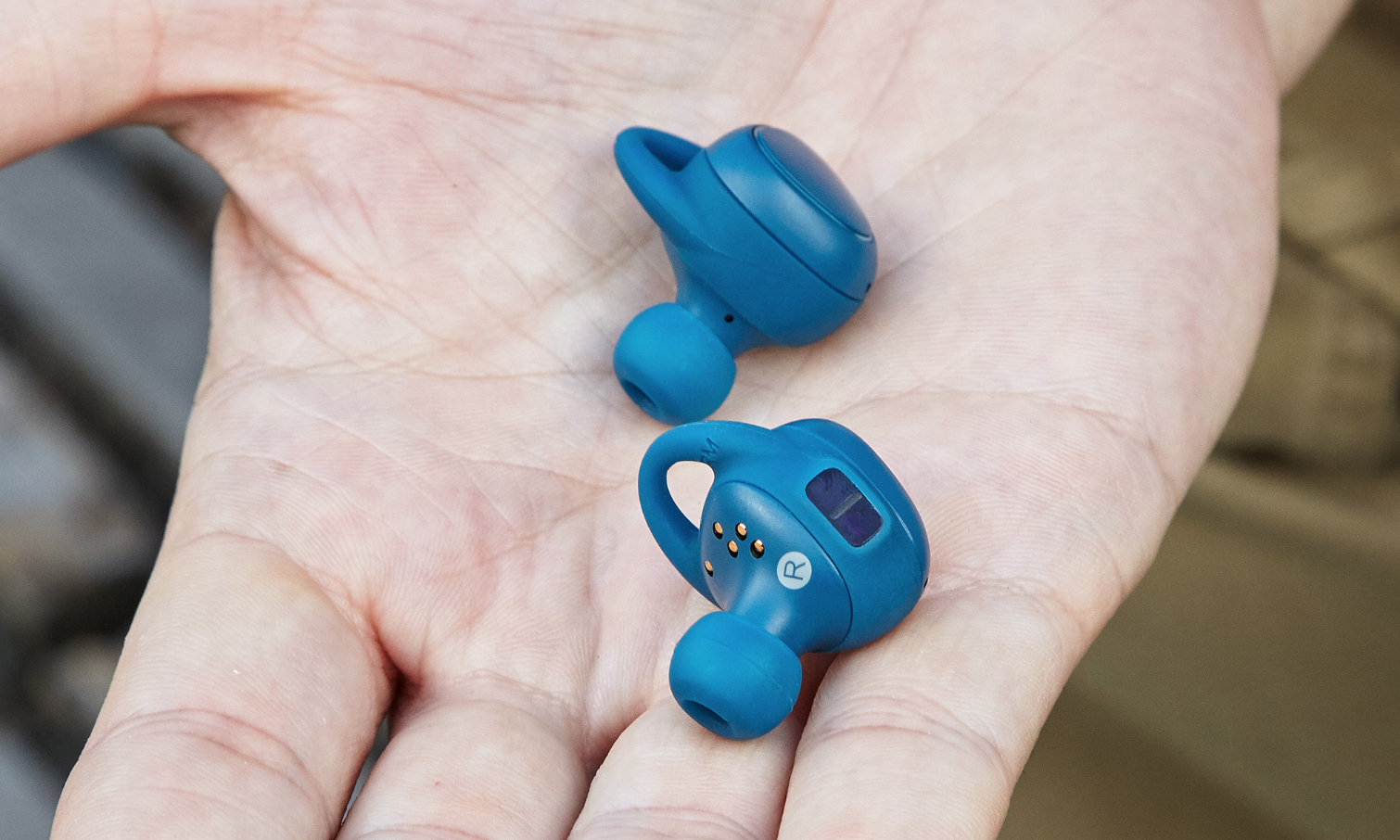Tom's Guide Verdict
With a built-in heart rate monitor, accelerometer and storage for music, the Samsung Gear IconX earbuds are packed. Just don't expect long battery life.
Pros
- +
Great sound
- +
Accurate heart rate monitor, distance tracking
- +
Easy to use
- +
Built-in storage for music
Cons
- -
Requires Android smartphone for all features
- -
Need to plug into phone or PC to transfer music
- -
Expensive
- -
Short battery life
Why you can trust Tom's Guide
There is an inherent conflict between running light, and yet still wanting to track your mileage and listen to music. Samsung's Gear IconX earbuds ($249) are able to hurdle this feat, packing in an accelerometer, a heart rate monitor and 4GB of storage into two tiny buds. But, costing as much as a dedicated GPS running watch, you'll have to think hard about their value.
Design
Available in black, white or blue, the Gear IconX look snazzy, without being ostentatious. The small IconX buds have a rounded, triangular shape, with small wings that fit comfortably yet securely in my ear. The buds don't protrude as much as the Motorola VerveOnes+ and they don't dangle from one's ears like Apple's upcoming AirPods.

The IconX nestle into a 3.6-inch-long ovular plastic case that looks like an overly large suppository. The case does more than just keep these pricey buds secure; it can also charge them back up via its 315mAh battery, and a micro USB port on its back lets you transfer music to the earbuds (more on that later).

The IconX have a P2i nano coating that makes them splash-resistant, but it isn't as waterproof as the upcoming Jabra Elite Sport earbuds, which are IP67-rated, meaning they can last in up to 3 feet of water for 30 minutes. Still, after a number of sweaty workouts, the IconX were still going strong.
All interaction with the IconX is via touch controls on both earbuds; tap once to play or pause, tap twice to advance tracks, and tap and hold to start and stop workouts.
MORE: Best Headphones and Earbuds for Enjoying Music
Setup
Sorry, iPhone owners: To get the most out of the Samsung Gear IconX, you'll need a phone running Android 4.4 or later.
After installing the Samsung Gear Manager app, you then use it to connect to the IconX buds. You could simply link them via Bluetooth — which works for iPhones, too — but you won't be able to change settings on the earbuds, such as selecting which notifications the earbuds read, activating the exercise audio guide, and changing the language of the voice guide.

Included in the box with the IconX is a USB cable, as well as a female USB-to-male micro USB adapter. Don't lose the cable or adapter, because this is the only way you'll be able to load music onto the headphones, as well as upgrade the firmware. The earbuds have 4GB of storage, 3.5GB of which is available to the user; I copied 115MB of songs to the headphones in about a minute.
If you don't have an Android device, you can upload music to the IconX from a computer (MacOS or Windows) using the same cable. To do this, just plug the earbud case into your PC, and the software will automatically install. The whole process was very straightforward.
Sorry, iPhone owners: To get the most out of the Samsung IconX, you'll need a phone running Android 4.4 or later.
The Gear IconX Manager software lets you add and remove tracks, as well as update the IconX's firmware, but for everything else, you'll need a smartphone running Android 4.4 or higher.
Performance
There's no on or off button for the IconX; the buds automatically turn on when you take them out of their case and insert them in your ears. You also hear a small "whooom" tone and a reassuring female voice says "connected."
I really liked the voice coach in the IconX — a pleasant female voice who told me my time, distance, pace, heart rate and heart rate zone. She spoke in a conversational tone, a far cry from the robotic voice on the Samsung Gear Fit 2.

You can have the voice coach tell you your metrics based on elapsed time or distance; unfortunately, the latter is only offered in kilometers, but I imagine this will change for the U.S. market.
I also liked that, instead of pausing the music, the IconX merely lowered the volume as the voice spoke. It's very polite, too. If you try to increase the volume too much, she warns you that it can cause hearing loss.
In a sign that Samsung thought out the small details, the voice even switches from the left to the right ear depending which touch panel you press. The touch controls on the earbuds worked pretty well, but sometimes had a hard time distinguishing between taps and swipes when I was running; instead of changing the volume, it would pause or skip tracks. And, because the touch areas are so large, when I tried to adjust the fit of the buds, I would often start music playing, or trigger some other action.
Ambient sound mode will amplify the noise around you, so that you're more aware of your surroundings. It works well, but sounds very artificial.
For a device that only has an accelerometer to measure distance, the IconX proved surprisingly accurate. They reported a 4-mile run (as recorded by two Garmin GPS watches) as 3.99 miles. You can't get much better than that.

I also connected the IconX to my iPhone 6s, as I would any other Bluetooth headset. As I walked around, the IconX maintained a steady connection, with no drops whatsoever.
The IconX's heart rate monitor was somewhat inconsistent. The first time I used them, I went on a 4-mile run, during which the earbuds recorded my average heart rate at 167 beats per minute and my max heart rate as 182 BPM, which was nearly identical to what the Garmin Forerunner 235 — a device whose accuracy I've benchmarked — recorded (167/183).
I really liked the voice coach in the IconX ... She spoke in a conversational tone, a far cry from the robotic voice on the Samsung Gear Fit 2.
However, I next wore the IconX's on a 22-minute walk, and it recorded my average heart rate at 165 BPM, and my max at 219 BPM. Unless I was morbidly obese, there's no way my heart rate would beat that fast on a stroll.
On several other runs, though, the IconX's heart rate monitor was accurate, when compared with the Garmin watch.
MORE: Best Music Apps for Rocking Out
Battery Life: Good for 5Ks, not Marathons
The one downside to having tiny earbuds packed with tons of sensors? Short battery life. Samsung estimates the IconX will last 1.5 to 2 hours with workout features and Bluetooth streaming turned on, and 3 to 4 hours listening to music stored on the headphones.
After a 34-minute run, using both the music streaming, heart rate monitor and activity tracking, the IconX buds were down to about 20 percent battery life, which gave me about 15 minutes more of juice. However, on subsequent runs of around 50 minutes, they had about 40-50 percent charge remaining.
For a device that has only an accelerometer to measure distance, the IconX was surprisingly accurate.
Fortunately, the carrying case, which has a 315mAh battery, doubles as a mobile charger. You'll want to keep them in the case when not in use; otherwise, the buds stay "on," continually looking for your ears.
Bottom Line
Overall, I was really impressed with the Gear IconX earbuds. They fit comfortably, tracked my distance and heart rate well, and let me listen to music without having to carry around any extra gear. However, there are a few things that keep me from giving these $249 buds a higher rating.

For one, if you don't have an Android smartphone, you're not going to be able to use all of the IconX's features, transferring music. More important, their short battery life means you'll have to recharge after running anything longer than an hour. But if you want to run with the least amount of gadgets possible, the Gear Icon X is a good partner and in-ear coach.

Michael A. Prospero is the U.S. Editor-in-Chief for Tom’s Guide. He oversees all evergreen content and oversees the Homes, Smart Home, and Fitness/Wearables categories for the site. In his spare time, he also tests out the latest drones, electric scooters, and smart home gadgets, such as video doorbells. Before his tenure at Tom's Guide, he was the Reviews Editor for Laptop Magazine, a reporter at Fast Company, the Times of Trenton, and, many eons back, an intern at George magazine. He received his undergraduate degree from Boston College, where he worked on the campus newspaper The Heights, and then attended the Columbia University school of Journalism. When he’s not testing out the latest running watch, electric scooter, or skiing or training for a marathon, he’s probably using the latest sous vide machine, smoker, or pizza oven, to the delight — or chagrin — of his family.
